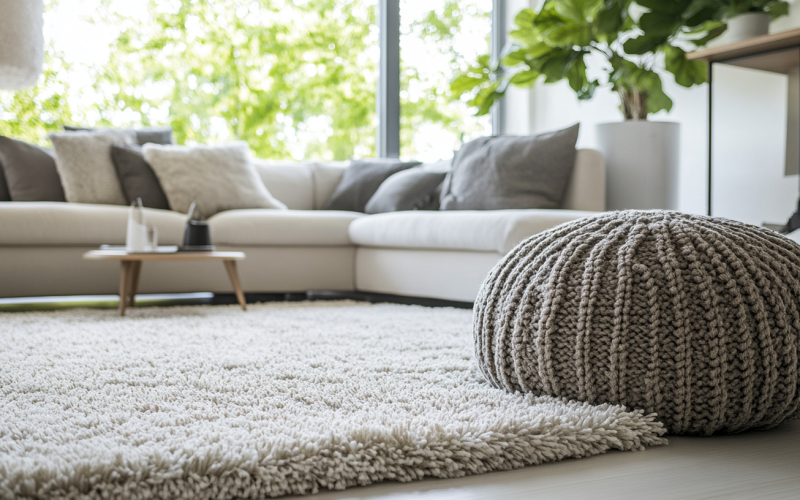Painting a marble fireplace can be tricky. Many homeowners worry about damaging the marble or not achieving the desired look. It’s understandable – marble needs special care.
But here’s the good news: with the right steps, you can paint your marble fireplace and give it a new look. This guide will take you through the whole process, from start to finish.
You’ll learn how to clean and prepare the marble, pick the right paint and tools, and apply the paint so it lasts.
If you follow along, you can turn your old marble fireplace into a focal point in your room.
Is Painting Your Marble Fireplace Possible?

Yes, you can paint a marble fireplace. It’s a task that many homeowners consider when they want to update their living space without the cost of replacing the entire fireplace.
However, it’s not as simple as grabbing a brush and some paint. Marble is a special material that needs careful handling. The key to a good outcome lies in how well you prepare the surface and what type of paint you use.
Getting ready to paint marble takes time and effort. You must clean it well, make the surface rough so the paint sticks, and use a special primer. The paint you choose matters, too – not all paints work well on marble.
While you can paint a marble fireplace yourself, it’s tricky. If you’re unsure about your skills, it might be smart to hire a pro. They know how to work with marble and have the right tools.
Key Points to Consider Before You Start

Before starting to paint a marble fireplace, there are a few things to keep in mind. Marble isn’t like other surfaces you might have painted before; it comes with challenges.
- First, marble is pretty delicate. If you’re not careful, it can get scratched or damaged easily. This means you must be extra gentle when preparing it for paint.
- Another thing to remember is that paint doesn’t stick well to marble on its own. If you slap some paint on without doing the right prep work, it will likely peel off quickly. That’s why getting the surface ready is so important.
- If you consider doing this as a DIY project, know it’s not the easiest job. There’s a lot of careful work involved, and if you’re not sure what you’re doing, you might end up with results you’re not happy with. That’s why it’s often suggested that you get a pro to do it if you can.
Step-by-Step Guide to Marble Fireplace Painting

Step 1: Preparation
Getting your marble fireplace ready for paint is a big job, but it’s really important.
Here’s how to do it:
- Clean the Marble: Use a degreasing cleaner mixed with hot water. This helps get rid of any dirt, oil, or old wax that might be on the surface. Make sure to rinse it off well after cleaning.
- Lightly Sand the Marble: Use 150-grit sandpaper for this. The idea isn’t to scratch up the marble but to make the surface a little rough so the paint will stick better.
- Apply a Masonry Sealant and Primer: This is really important—it helps the paint stick and keeps it from soaking into the marble. Usually, two coats are needed to ensure good coverage.
- Check for Any Gaps or Seams in The Marble: If you find any, fill them in with caulk. This helps prevent paint from seeping into these spaces and makes for a smoother finish.
- Remove Any Hardware or Fixtures: Remove any hardware or fixtures on the fireplace, such as grates or mantels. Doing so lets you paint the whole surface without having to work around them.
Step 2: Picking the Perfect Paint
Picking the right paint is just as important as preparing the surface. You can’t use any marble paint—you need something special.
Here’s what to look for when choosing paint for a marble fireplace:
- The main thing to do is to use paint that’s made from natural stone and masonry.
- These paints are flexible, so they can move slightly as the marble expands and contracts with temperature changes.
- This helps prevent cracking and peeling.
There are a few types of paint that work well on marble:
- 100% Acrylic Latex Paint: This is usually the top choice. It sticks well to marble and holds up over time. It’s also water-based, which makes it easier to work with and clean up.
- Epoxy Paint: This type of paint is really tough and protective. It’s a bit trickier to use, though, because it comes in two parts that you have to mix.
- Urethane Alkyd Paint: This is an oil-based option. It sticks really well to marble, but it takes longer to dry and can turn yellow over time.
Step 3: Choosing the Right Finish
After choosing the right paint type, you need to think about the finish. The finish affects how your fireplace will look and how well it holds up.
Here are the options to consider:
- Matte or Flat Finish: This is a good choice for a subtle look. It doesn’t reflect much light, so it’s great for hiding small flaws in the marble. Plus, it handles heat well, which is important for a fireplace. The downside is that it can be harder to clean.
- Satin or Eggshell Finish: This finish gives a soft, low-level shine. It’s more durable than matte and easier to clean, which is handy for a fireplace that might get dirty. It’s also good at hiding imperfections, though not as much as a matte finish.
- Semi-gloss or Gloss Finish: These finishes give the most shine. They’re really easy to clean, which is a plus. But they also show every little flaw on the surface, so your prep work needs to be perfect. They’re not usually the first choice for fireplaces, but some people like the look.
Step 4: Painting
Now that you’ve got your marble prepped and your paint chosen, it’s time to start painting.
Here are some tips to get the best results:
- First, let’s talk about brushes. A nylon/polyester brush is best when painting marble. These brushes are great for pushing the paint into all the little pores in the marble.
- When you’re applying the paint, think thin. It’s better to put on several thin coats than one thick one.
- Thick coats can crack as they dry, which is the last thing you want. Make sure each coat is completely dry before you start the next one. This might mean waiting a few hours between coats, but it’s worth it for a smooth finish.
- As you paint, work methodically. Start at one end and work your way across, keeping a “wet edge” as you go. This means always painting into the wet paint you just put down. It helps avoid lap marks—those ugly lines you can sometimes see where two areas of paint overlap.
- Keep an eye out for drips as you go. Paint dries fast on marble, so if you see a drip, smooth it immediately. Once it’s dry, it’s much harder to fix.
Step 5: Drying and Curing
After you’ve finished painting, you might think the job is done. However, waiting for the paint to dry and cure fully is another crucial step.
- This takes longer than expected, but it’s key to a long-lasting finish. Latex paint, which is usually recommended for marble fireplaces, will dry to the touch pretty quickly—usually within 1 to 2 hours.
- The paint needs time to cure fully, which means allowing it to harden completely and bond with the marble surface. This process can take anywhere from 14 to 30 days, depending on the humidity and temperature in your home.
- The most important thing is to wait to use your fireplace until the paint has fully cured. Lighting a fire and enjoying your newly painted fireplace right away is tempting, but using it too soon can damage the paint job you worked so hard on.
- Keep the area around the fireplace clear while waiting for the paint to cure. Avoid touching the painted surface or placing items on it. The more you can leave it alone during this time, the better the final result will be.
- Remember, good things come to those who wait. A little patience now will pay off with a beautifully painted fireplace that lasts years.
Conclusion
Painting your marble fireplace can be a great way to refresh your living space without the cost of a full replacement.
We’ve covered the steps from preparation to final touches, including choosing the right paint and finish. Remember, the key to success lies in proper preparation and using the right materials.
While it’s possible to do this as a DIY project, don’t hesitate to consider hiring a professional if you’re unsure about tackling it yourself.
Whether you choose to paint your marble fireplace or not, the decision should be based on your specific needs, budget, and the look you’re aiming for.
If you decide to paint, take your time with each step, and you’ll end up with a beautifully refreshed fireplace you can enjoy for years to come.
What are your thoughts on painting marble fireplaces?











